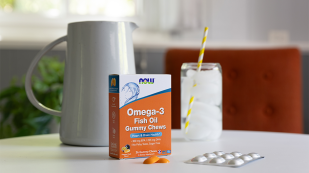Use coupon code CARDAMOM with your purchase of $40 or more for a free†
Cardamom OilVitamin C FAQs

What is vitamin C?
Vitamin C is also known as ascorbic acid, L-ascorbic acid, or ascorbate. It is an essential vitamin that’s naturally synthesized in the livers of most mammals from blood sugar (glucose) as needed.
However, humans, higher primates, Guinea pigs, and some fruit-eating bats lack an enzyme required for this internal production of the vitamin, so we must get it in foods every day, and constantly recycle it in the body using other antioxidants and free radical fighters.
What is calcium ascorbate?
Calcium ascorbate is a buffered salt (mineral compound) form of the water-soluble antioxidant vitamin C (ascorbic acid).* Calcium is reacted with ascorbic acid to buffer the acidic nature of this vitamin, making it gentler for those who have a sensitive gastrointestinal tract.
The pH of this buffered mineral ascorbate is approximately 6.8~7.4, as compared to ascorbic acid that is about a pH of 2.5. Calcium Ascorbate provides approximately 10% elemental calcium and 90% vitamin C, by weight.
What does vitamin C do in our bodies?
Ascorbate (vitamin C) is a reducing sugar (has a reactive ene-diol structure) that is involved in biochemical processes, such as hydroxylation of proline and lysine utilized in the formation of collagen and healthy connective tissue.* Ascorbate is involved in many other vital functions such as the mobilization of iron, competence of the immune system, and as an antioxidant for scavenging of reactive free radicals.*
What is the function of citrus bioflavonoids that are in some of your vitamin C formulas?
Bioflavonoids are biologically active flavonoid compounds found throughout the entire plant kingdom. Since the discovery of flavonoids in 1936, over 4,000 different types have been characterized. Though there are several forms of bioflavonoids in the citrus complex, the predominant one is Hesperidin. These flavonoids exhibit beneficial effects on capillary permeability and therefore support healthy blood flow.* They work synergistically with vitamin C.*
Why are there color variations in your different vitamin C products, and are they safe to take?
Most natural vitamin C products vary in color from batch-to-batch and bottle-to-bottle. There are normally variations in the color of the raw material used during manufacturing. This is due to natural color variations in the source of the vitamin C. Generally, you will find C supplements to range in color from off-white to light tan to light gray. Additional color variation can be introduced by other ingredients in a formula, such as citrus bioflavonoids, etc.
Over the course of the shelf-life of a vitamin C supplement, oxidation can cause a slight change in color, so you may find the C-1000 you bought has changed to a darker color six months later. This is a normal occurrence, and the product is safe to use at least until the “Best By” date, and often beyond.
NOW® is generally conservative with our usage dates, so a vitamin C product should still meet label claims and is likely safe after that date, but may not be as effective due to oxidation lowering the strength of the vitamin over time. If the product has significantly darkened and/or appears to have been exposed to moisture, those are signs that the product may no longer be safe and effective.
Can I pour the powder in NOW® Vitamin C capsules into a liquid instead of swallowing the capsule?
Many people don’t want to or cannot swallow capsules, tablets, or softgels, for various reasons. Encapsulated vitamin C products from NOW® can be opened and mixed into a liquid for consumption. Juice or water is recommended if you choose this method. However, taking vitamin C with water on an empty stomach is the usual method of ingestion. Before you try this, please be aware that we carry several powdered forms of vitamin C products for your convenience.
*These statements have not been evaluated by the Food and Drug Administration. These products are not intended to diagnose, treat, cure or prevent any disease.











